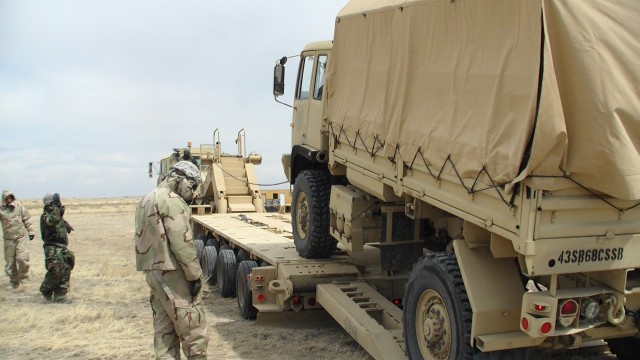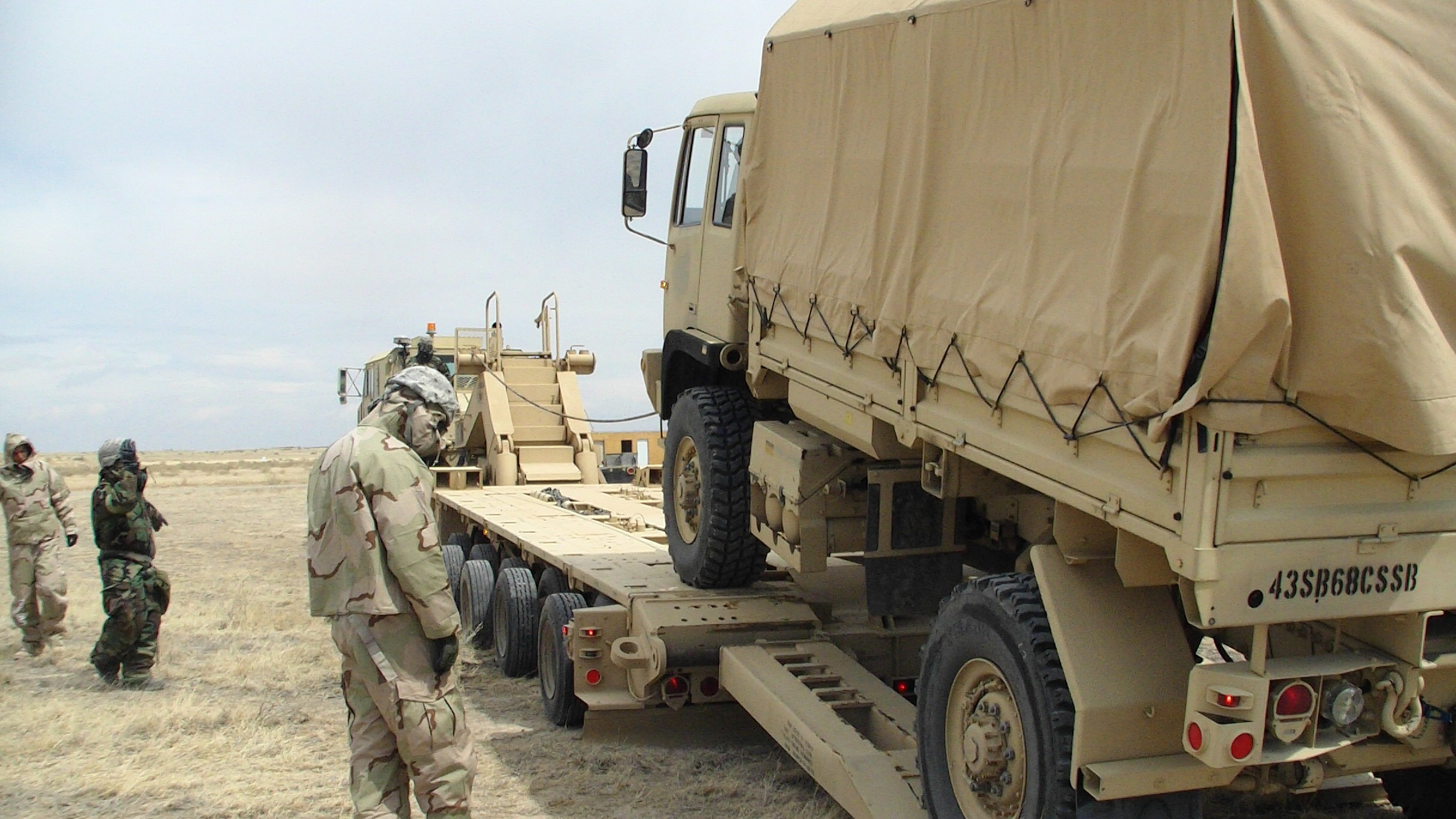
FORT CARSON, Colo. -- The 32nd Transportation Company conducted training April 11-18 at the PiAfA+-on Canyon Maneuver Site to attain an assessment of the basic skills required to effectively operate as a medium truck company within the U.S. Army.
Assigned to the 68th Combat Sustainment Support Battalion, 43rd Sustainment Brigade, the training was based on the 32nd Trans. Mission Essential Task List that includes the platoons' ability to communicate, perform convoy operations, respond to a suspected contaminated area and interact with the media and the civilian population.
By assessing these basic tasks, 32nd Trans. was able to establish a foundation to build on, according to its commander, Capt. Stuart Williams.
"My intent is to find out exactly who we are and what we are capable of prior to actual missions," Williams said. "After all, you do not get better at driving trucks unless you are actually driving trucks."
Training started with an introduction to the newest version of the Movement Tracking System, which provides company leadership the ability to not only track its Soldiers' positions, but also their equipment in near real time. It also gives them the ability to effectively communicate via short messaging from nearly anywhere in the world, therefore allowing the command group to disseminate information down to the lowest levels faster than ever before, he said.
The company received instruction on how to correctly perform convoy operations and classes on how to deliver supplies and provide humanitarian aid as well as the correct way to interact with the media. The Soldiers also learned how to effectively operate in a contaminated area using their chemical protection suits. Training culminated with an assessment through a variety of scenarios based on the training they received.
The scenarios involved picking up supplies and delivering them to specified locations that had experienced some kind of disaster, ranging from a natural disaster, such as flooding or earthquakes, to towns that had been contaminated due to some form of chemical attack or runoff from a nuclear power plant.
Simultaneously, the Soldiers were interacting with the public in various states of panic and disarray and conducting interviews with media organizations.
The ability to identify and react accordingly to any situation is paramount to the success of any Army truck company mission. If even the most minute detail is overlooked or someone is not able to do his job properly, the entire movement could be placed in jeopardy before it has even begun, Williams said.

Social Sharing